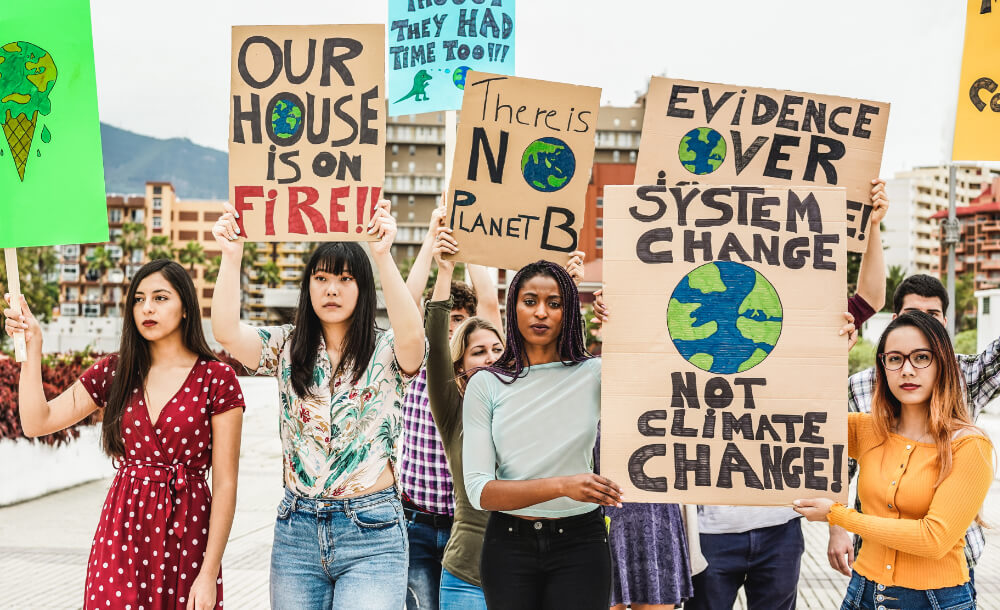One small piece of your Diversity, Equity and Inclusion (DEI) strategy is crafting a DEI statement to show where your company stands, outline its vision for creating an equitable workplace, and provide accountability for your actions.
A DEI statement should evolve as you continue to confront systemic bias and adapt your policies and procedures to reflect what you’re learning.
So, whether you’re creating a DEI statement for the first time or revising the one you’ve got, make sure to include the following sections...
5 Key Sections Of A DEI Statement
These sections don’t have to follow a specific order and should be written so that they flow naturally from one to the other.
#1 Acknowledge Inequity
We live in a world of injustice and inequity. So, while this may seem like an obvious statement, it’s a great place to begin before outlining your vision for a more equitable workspace or world.

This section of your DEI statement can be short and simple (even a single sentence) or it can be more involved. It will be up to you and your team to decide how much detail you want to include.
General Examples:
We acknowledge that there are deep injustices in the world.
We recognize there are systemic barriers to equal opportunities and work to correct them within our organization.
Example - Inclusive Prosperity Capital:
Diversity and equity movements revolve around addressing an imbalance of access to opportunity for everyone regardless of race, ethnicity, sexual orientation, religion, gender identity, disability, etc. Systemic racism, with its roots in slavery and other historical events that oppress certain groups, have not been eradicated and impact all modern societies.
#2 Your Role
Your company can’t fix everything, but you can be very clear about what you can do to contribute to a more equitable and just world based on your mission and expertise. This section is all about providing context.
We’ll continue to use Inclusive Prosperity Capital as an example so that you can see just how granular and specific you can be with your DEI statements. You’ll also notice with this example that acknowledgment, their role, and their vision are all blended together - the five sections we’re laying out for you in this article aren’t meant to be discrete.
Example - Inclusive Prosperity Capital:
We work in the financial services industry which has historically been one of the largest perpetrators of systemic racism through redlining and predatory practices in lending, investments, and insurance. These practices have created an even greater divide in the geographic segregation seen all over the United States today.
We provide a gateway to inclusive prosperity by engaging with communities impacted most by climate change. We invest in clean energy and resilience in partnership with local initiatives and organizations to provide energy, security, climate justice, and economic growth.
We believe everyone should have access to the benefits of clean energy and resilience. Together, we can create change in underinvested neighborhoods and underserved markets to achieve inclusive prosperity.

THE HIVE
INCLUSIVE WORKPLACES OUTPERFORM THEIR COUNTERPARTS
Learn to build DEI initiatives that set your company apart with this step-by-step guide because diversity is just the beginning.
#3 Your Why
Next, we suggest you include why you’re committed to DEI work. It serves as a rallying point for employees, customers, and senior leaders to support your work. It inspires and motivates everyone to keep working through the challenges and adjusting as they learn more.
Your why acts like a North Star guiding you back to the reasons you made the commitment to do this work. Consider what DEI means to your company and how it supports the company's vision, mission, and values.

Example - Inclusive Prosperity Capital:
We urgently need all people included in the clean energy and resilience movement. We bring resources to those left behind, specifically focusing on equity, equality, and justice.
Together, we can combat the negative impacts of climate change on our most vulnerable communities. We can make our world greener, healthier, and more sustainable when we work collaboratively and creatively.
#4 Your Vision
Next, discuss your vision for DEI work within your organization. How will the changes you seek to make help to create a more equitable workplace or world? What efforts or initiatives will you create, and how will they make a positive impact?
Example - Apple:
We belong. Together. We’re continuing to create a culture of inclusion, increasing representation across teams and holding ourselves accountable at every level. Because belonging takes all of us.

Apple also does a great job of using statistics to show the progress they’ve made and hold themselves accountable for the vision of belonging they seek to create.
#5 Your Commitments
Finally, identify the specific DEI initiatives that your company is committing to. We have two examples to share for this section of your DEI statement, although we recognize that this will vary widely across different companies and industries.
Example - North Carolina Water Resources Research Institute:
Our program will continue to strive for diversity, equity, inclusion, justice, and accessibility by:
- Proactively recruiting, retaining, and preparing a diverse workforce that reflects diversity across all levels of our organizational structure.
- Engaging and serving communities and stakeholders that are representative of the broader populations where our programs operate.
- Creating and facilitating research opportunities that a) equitably fund under-targeted and under-served universities, faculty, and students, and b) foster research with real-world outcomes that benefit under-served communities.

Example - Inclusive Prosperity Capital:
We will implement changes to the recruiting process for open job positions and commit to evolving the organizational culture to ensure black, indigenous, and people of color (BIPOC) and diverse staff are not tokenized and are truly valued as important members of the team.
We commit to creating an environment where all staff feel truly valued. We will create an inclusive culture that ensures all IPC employees feel a common sense of belonging within the organization.
We will implement initiatives to gauge employees’ company engagement across different areas of the organization. To ensure feedback and opinions are heard and accepted, we commit to having hard conversations with one another in safe spaces, including but not limited to team off-site meetings, monthly staff meetings, weekly team check-ins, and one-on-ones.
We will call out approaches and behaviors in our industry that are not in service to the markets we intend to serve, such as programs that have too much complexity and are too costly to be effective. We will use our voices to call attention to systemic barriers that need to be fixed.
We will elevate the voices of other organizations, led by BIPOC and the communities we serve, that are already doing this work or similar work. Recognizing that we are not solving these systemic issues on our own, as individuals who do not have these experiences.

We hope that this framework will guide you in creating your own diversity, equity, and inclusion statement, and we encourage you to involve a variety of voices from across your organization when writing one.
We also recommend blocking time every year to review and revise your DEI statement and initiatives because this work requires us to keep evolving.
If you’re interested in learning more about the topics we cover in 'The Hive' (repository), you can find more information here or get in touch with us.


